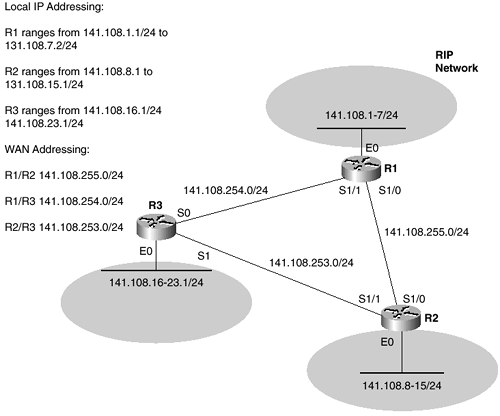Scenario 8-2: Migrating from RIP to OSPF in the Core
In this scenario, you migrate a typical RIP network to OSPF in the core of the network and leave RIP on the edge of the network, where typically, on LAN-based segments, bandwidth is not a major concern.
IP addressing and loopback address assignments have already been completed.
Figure 8-3 displays the current RIP network that you migrate to OSPF.
Figure 8-3. RIP Topology

Loopbacks have been configured in R1, R2, and R3 to populate the IP routing tables. The Class B network, 141.108.0.0, has been subnetted using a Class C mask throughout. Because all RIP-enabled routers have a local interface ...
Get CCNP® Practical Studies: Routing now with the O’Reilly learning platform.
O’Reilly members experience books, live events, courses curated by job role, and more from O’Reilly and nearly 200 top publishers.

